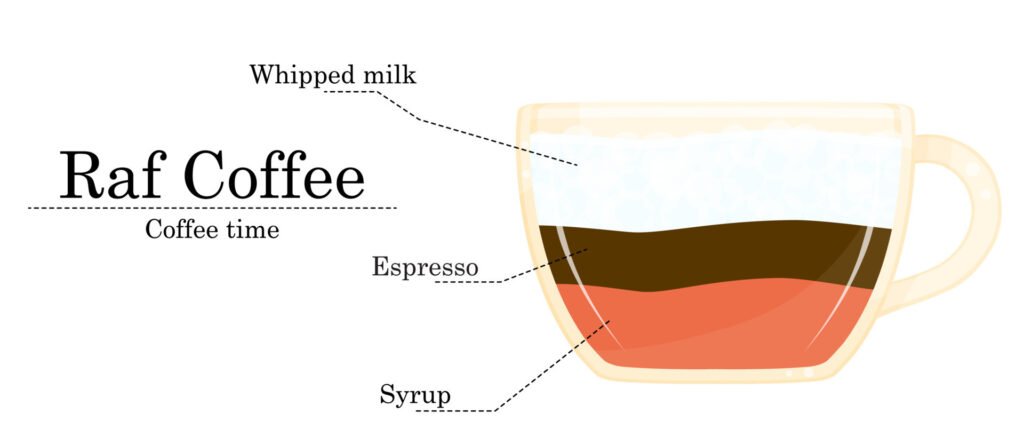Today, we delve into the world of Raf Coffee, a unique beverage that has taken the coffee scene by storm. Originating in Russia, specifically Moscow, Raf Coffee stands out with its creamy texture and delicate flavor. Let’s explore its origins, preparation methods, and recipes.
The Birth of Raf Coffee
A Student’s Creation
The story of Raf Coffee begins in a Moscow café frequented by a student who wasn’t fond of traditional coffee’s strong taste. Preferring tea and cocktails, he sought a milder coffee experience. This led to the café’s first enthusiasts experimenting with different ingredients to cater to his taste.
The First Recipe
The initial attempts resulted in a cocktail that was creamy, sweet, with a hint of coffee – a hit with the student. The drink, which wasn’t on the menu, became known among the staff as “Raf,” after the student. Friends and acquaintances who tried it helped spread its popularity.
The Evolution of Raf Coffee
Spread Across Cafés
Gleb Neveiking, a notable figure in the cocktail community, played a crucial role in popularizing Raf Coffee. He introduced it to Coffeemania, and from there, it spread to various coffee chains. Known among baristas for a long time, Raf Coffee gained mainstream popularity about ten years ago.

Recipe Diversification
Over the years, the classic Raf recipe has been adapted and experimented with extensively. While the original was made with 10-11% cream, espresso, and cane sugar, modern versions incorporate a wide range of flavors like citrus, halva, and banana.
Check out our other recipes for Raf coffee:
Classic Raf Coffee Recipe
Ingredients
- 10-11% cream
- Espresso
- Cane sugar or a sweetener of your choice

Preparation
Combine the cream, sugar, and espresso in a pitcher. The mixture is then whisked to create a uniform, creamy coffee mass.
Variations in Restaurants and Bars
In the hospitality industry, Raf Coffee is often modified. Bars and restaurants, traditionally using 22% cream for their cocktails, started to blend it with milk to reduce the fat content. This, however, changes the flavor profile significantly, leading to a different drink.
The Impact of Cost and Health Concerns
Reducing Costs and Calories
Some cafés have further altered the recipe to lower costs or create a less fatty drink. This involves diluting 11% cream with milk, resulting in a 6-6.5% fat content, markedly different from the original Raf Coffee.
Misinterpretations
Unfortunately, some establishments have strayed too far from the original recipe, creating drinks that bear little resemblance to authentic Raf Coffee. This includes using regular milk with added syrup or sugar, combined with espresso.
Raf Coffee Today
Simplicity and Forgiveness
Raf Coffee remains one of the simplest yet satisfying drinks to make in a café. Its creamy and sweet base masks any minor errors in the espresso preparation, making it a forgiving beverage for baristas.
Consistency and Decoration
After mixing the ingredients and frothing, the drink is poured into a glass. The consistency should be uniform. For an added touch, leftovers from the espresso can be used to create decorative patterns on the surface.
Personal Preferences
While the classic Raf Coffee might be too creamy or sweet for some, it remains a symbol of tradition in the coffee world, representing a creamy, slightly sweet, and subtly coffee-flavored drink.
Conclusion
Raf Coffee, with its roots in a Moscow café, stands as a testament to innovation and adaptation in the coffee world. From a single student’s preference to a widespread favorite, it showcases the evolving nature of coffee culture. Whether you prefer the classic recipe or a modern twist, Raf Coffee offers a delightful experience for all coffee enthusiasts.



Leave a Reply